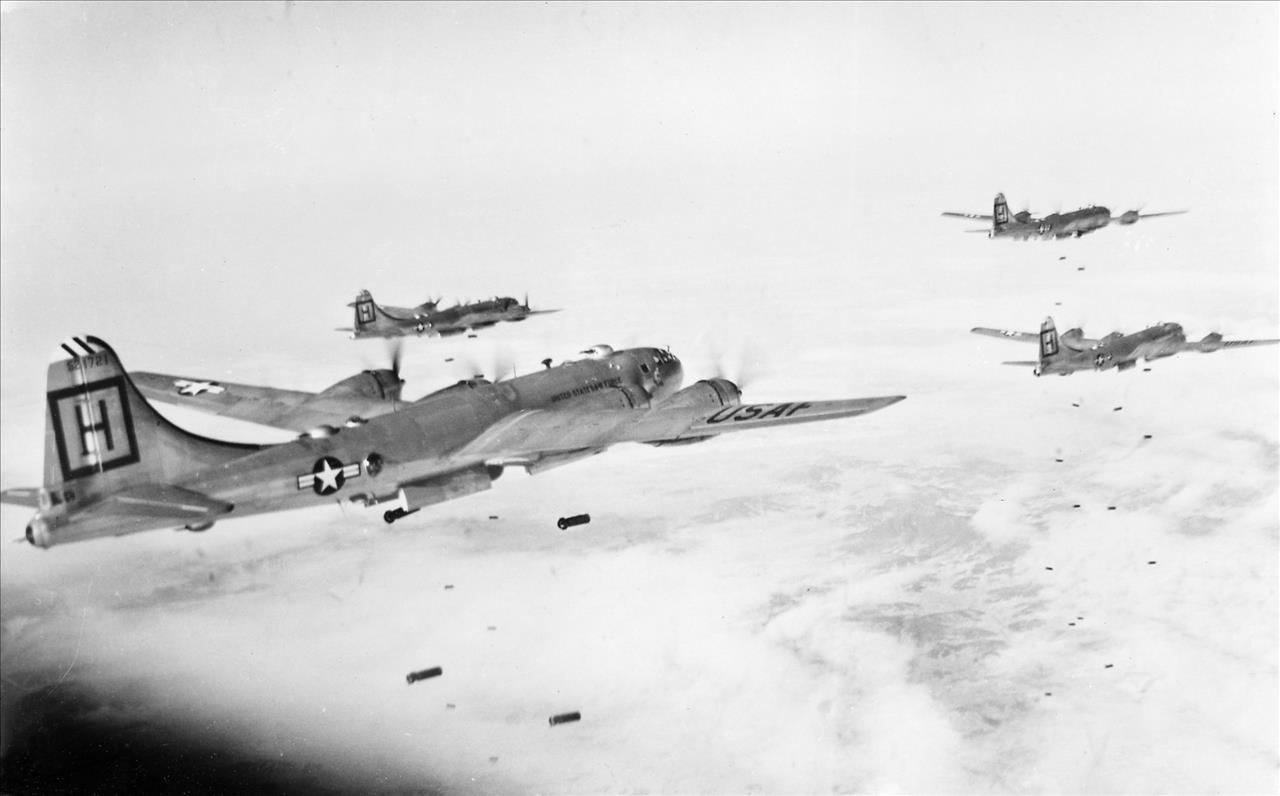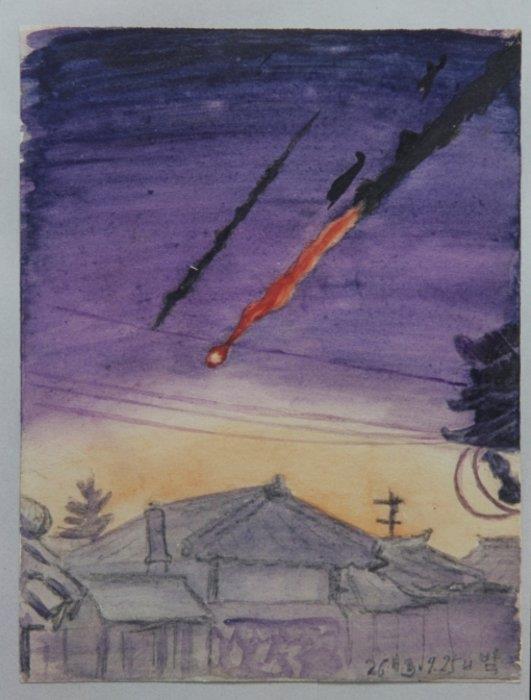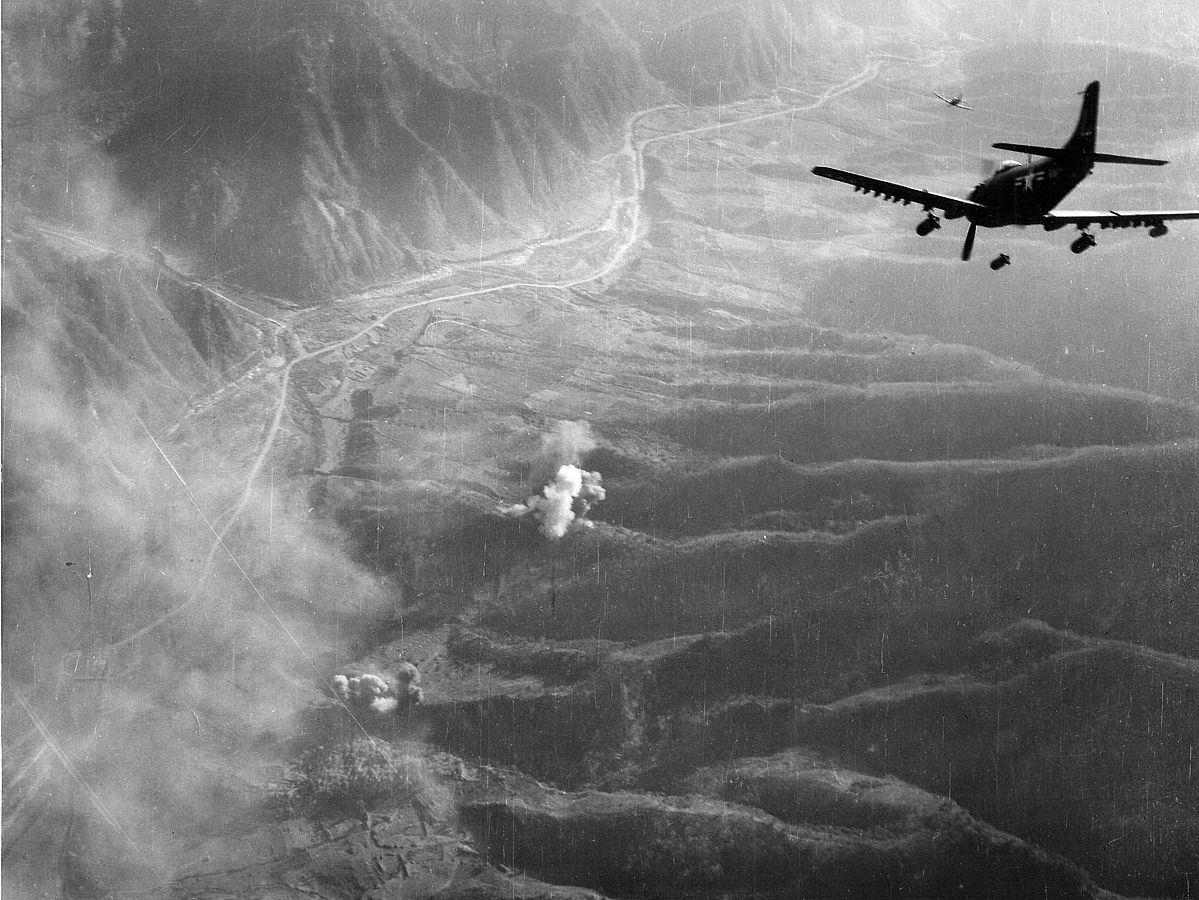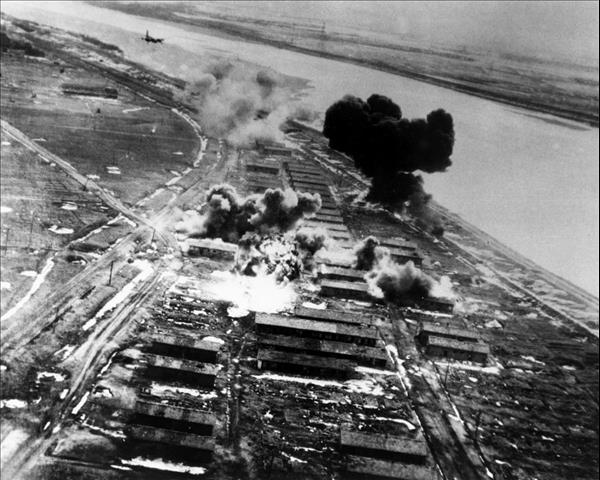
US Air Force Takes Flak In New Korean War Film
SEOUL – At a time when Russian missiles are thundering down upon Ukraine and North Korean missiles are hurtling through Asian skies, a searing new documentary captures the demonic impact of an air campaign upon those at ground zero.
In this story, however, it is Americans who are the villains.
The Scorched Earth, which premiered last week at the Busan International Film Festival, was shown on Thursday to foreign correspondents in Seoul. The 90-minute work covers the US tactical air campaign in South Korea, and its strategic bombing of North Korea, during the 1950-53 Korean War.
It is grim and wrenching – but arguably necessary – viewing.
With North Korea's apparently endless missile tests elevating tensions across the region, a reminder of what happens when leaders choose kinetic solutions is timely. For many, of course, it will not be a reminder: The biblical destruction and bloody carnage of the“Forgotten War” is simply unknown.
Scorched Earth is the latest in a line of English-language works that have, since the 1980s, shifted the historiographical terrain of the war. What was once a simplistic“defense against Communist invasion” narrative has become increasingly nuanced.
And a chunk of the nuance – North Korea's virtual helplessness under the US bomb storm – is germane today. While it does not excuse the relentless dictatorship of the Kims, it does explain their paranoia, and their focus on the endless acquisition of ever more powerful arms, at ruinous cost to their nation.

A 'clean' image of the bombing war: US B-29s unload their munitions through clouds above North Korea. The staggering devastation that rained down upon a country that, for the most part, had minimal air defenses is widely believed to have compelled the massive militarization of today's North Korea. Image: Wikimedia Commons Blood red clouds
Visually, Scorched Earth combines archive newsreels and gun camera footage from aircraft with still photographs and scans of declassified US documents.
Fighter bombers skim over rice paddies and hills, strafing villages; strategic bombers unload over North Korean cities. Strikes with machine-gun fire, high explosives and napalm are captured. Targets disintegrate.
Images show files of refugees in the snow, the rubble of bombed cities, the detritus of shattered villages. Dead lie in ditches; a mutilated corpse is entangled in the ruins of a home.
Audibly, the film offers a sinister, droning soundtrack. And in an especially emotive gut punch, the testimonies of survivors are read by voice actors. Children talk of burying dead parents in city parks, of skies blackened for days, of civilians using pitchforks to sift corpses from wreckage.
The Korean War saw the first widespread use of a particularly nasty incendiary. Blending naphtha as its combustible element and palm oil to gel it, napalm burned at eight times the heat of boiling water and stuck to everything it touched. Rolling down like lava, instead of blowing upward like explosive, napalm canisters – dubbed“hell bombs” by media – proved effective against a dug-in enemy.
But they had diabolical effects on Korean thatched/wooden structures: Entire villages flared up. One interviewee who survived a bombing recalled the appalling aftermath.
“The bodies were scorched black – unspeakable! There was not a single person left, only maggots squirming,” she said.“Something was dripping from the ceiling on to my arm – someone's corpse was hanging up there, too.”

-This post-strike photo taken west of the Naktong River near Waegwan in South Korea shows where US B29 heavy bombers made a mass strike on August 16, 1950. Note the density of the bombing pattern, with craters from the 500-pound bombs after 99 planes bombed an area of about 5.5 by 12 kilometers, unloading more than 3,400 bombs. Image: Wikimedia Commons/ Air and Space Museum
The film places special focus on two dynamics. The first is the plight of refugees fleeing the fighting.
In the early days of the war, the infiltration of US lines by Communist partisans and disguised North Korean troops generated horrifically disproportionate results. Subsequently, US and later other allied contingents in the UN Command would use fire to disperse approaching refugees.
A printed US Air Force (USAF) order, shown onscreen, reads,“The army has requested that we strafe all refugee parties approaching our positions.”
The second dynamic is the“scorched earth” retreat of winter 1950-51. Then, Chinese forces, in a shock counteroffensive, drove UN Command forces from North Korea.
As they withdrew, UN troops laid waste the land, to leave nothing for the enemy. One veteran, speaking to this writer, compared it to the climax of a 007 film: As the hero escapes, amid gunfire and explosions, the sets collapse around him.
The USAF was a key arm in the war, flying 1,040,708 sorties. Over the South, the US enjoyed total air superiority. Over the North, a narrow strip of sky along the Chinese border –“MiG Alley,” in contemporary US parlance – was defended by Chinese, North Korean and Russian jet fighters, while a Soviet anti-aircraft division secretly deployed to the city of Shinuiju to cover the Yalu River crossing points.
Otherwise, the country's air defenses were minimal. As a result, US pilots had to beware of ground fire, but otherwise had virtually free rein through most of the peninsula's skies. And they had few incentives to learn about their victims below.
'We never learned much about our bombing targets – just a name and its latitude,” said one crewman on a B-29 heavy bomber.“It was all just North Korean property we were destroying.”
Coming so soon after World War II, the bombing and strafing of civilians, and the generation of mass collateral damage in Korea, were not considered crimes against humanity. Yet the same airman did wonder if he and his fellows – who carried out dike-destruction missions – were committing war crimes.

US dive bombers unleash rocket attacks into Seoul during the battle for the city in September 1950. This watercolor was painted from life by Kim Song-hwan, a young newspaper artist, who would, postwar become Korea's most famed cartoonist, 'Gobau.' Image: Courtesy Kim Song-hwan The unknown war
The film's director is activist South Korean auteur Lee Mi-young, whose previous works focused on the plights of miners. She had always wondered about the war – specifically about the traumas her grandmother experienced, which were never discussed.
However, she was inspired to make Scorched Earth while studying in Canada in 2017.
That year, North Korean missile and nuclear tests, and a war of words between North Korean leader Kim Jong Un and then-US president Donald Trump, raised fears that the Korean War might reignite. When Canadians asked her why North Korea hated the US so much, she realized she did not know, and began research.
Most of what Lee uncovered – from Australian, South Korean and US archives – in the documentary was in fact known at the time, thanks to the published work of Western journalists.
Contemporary accounts include pilots vomiting in their cockpits upon their return from missions, and the nightmarish madness of after-dark“intruder” raids into the North, where everything that moved – even livestock – was gunned down.
Likewise, UN prisoners of war, many of whom walked the length of North Korea – from their point of capture to POW camps in the country's China border – told of the apocalyptic destruction after returning home. Urban North Korea was flattened.
Yet while the demonic nature of the Korean War – which spiraled from a murderous civil war into an all-consuming total war pitting two world blocs against each other – is known to specialists, the public are ignorant.
“News about these bombings were reported and told, but are not known to most,” Lee said.“So in that sense, I use the words 'unknown' or 'forgotten.'”

US fighter-bombers strike targetrs in typically rugged Korean terrain. Tremendous collateral damage was caused by tactical air strikes. Image: Wikimedia Commons The changing war
While the war remains cloaked in propaganda in North Korea, many of its harshest realities were also cloaked in the South. During Seoul's period of authoritarian rule, between 1961 and 1987, criticism of the US, and its wartime actions, was out of bounds.
Likewise, the motivations of the approximately 700,000 North Koreans who fled south were never examined. Were they heading for freedom? Escaping Communist retaliation? Or abandoning homes destroyed amid the scorched-earth devastation?
Lee reckons the third reason.
“We know a lot of North Korean refugees who came south, but the reason they came south was not taught to us,” she said.“When this film was released in Busan, the children of survivors who migrated from the North said the pieces of the puzzles are fitting together. The missing pieces are in this film.”
Today, South Koreans on the left and the right hold very different views of the war, and its conduct. It is not just Koreans. In the English-language historiography of the war, Scorched Earth continues a revisionist trend.
Early US narratives of the war became entrenched in the patriotic 1950s, then Korea was overshadowed in the popular mind by color TV coverage of the war in Vietnam, from 1965-1975. Only in the 1980s did more critical narratives emerge, sparking heated debates on the war's origins and conduct.
In 1981, US historian Bruce Cumings The Origins of the Korean War, which called into question responsibility for the conflict by focusing on prewar struggles in the South. It also focused on the murderousness of the US-allied Seoul regime.
The book received a rapturous reception in leftist circles, and though some of its assertions were shot down after Soviet archives were opened to historians during the Boris Yeltsin administration, it remains a landmark.
In 1987, one of the Anglosphere's most eminent military historians, Max Hastings, The Korean War. A well-distributed, popular work, it offered sobering accounts of the war's brutalities – including the ruthless racism of some participants.
In 2011, the The Bridge at Nogun-ri investigated a massacre of civilians hiding under a bridge by US troops in the war's early days. It won a Pulitzer for its authorial team, Associated Press journalist Choe Sang-hoon, Charles Hanley and Margaret Mendoza.
Scorched Earth continues this tradition, and looks set to generate similar controversies.
Still, one question it cannot answer is the number of war dead, though its estimate – 3 million – is at the high end. And historians may well question the film's contention that there were higher per capita deaths in Korea than in World War II – during which Poland and the USSR suffered colossal casualties as a result of genocide, as well as battle – or the far longer war in Vietnam.
Because of the non-disclosure of North Korea's casualties, and to the mass population movements of hundreds of thousands, perhaps more than a million, that took place during the war – in both directions, albeit largely North-South – it is impossible to conduct an accurate body count.
Still, some credible figures exist that relate to the bombing of North Korea. Moscow's ambassador to Pyongyang, who oversaw Soviet and Eastern European field ambulances and hospitals in North Korea, offered the relatively precise – and immense – number of .
Regardless of exactitudes, the war was an epic tragedy – the final act of which has not yet played out. Given the centrality of Northeast Asia to the global economy, the Korean Peninsula bears watching.
Yet if you live in the US, don't expect Scorched Earth to appear on your local TV network any time soon.
Civilian refugees in northeastern Korea wait in desperate hope of seaborne ecacuation to the South in December 1950. It is questionable how many of these hundreds of thousands of refugees were fleeing their homes, and how many were fleeing the destruction of their country. Image: State Library of Victoria The unseen war
The doyen of US activist filmmakers – who called the film“hypnotic … stunning” – consulted to Lee during the post-production.
“Oliver Stone helped me connect with Hollywood people,” Lee said.“But they were not very comfortable with this film.”
Her plan is to take the film to America's Sundance Festival, while seeking specialist distribution companies. Another plan is to stream the film, though no platform has yet been decided upon. Further information will be released .
Lee plans two further documentaries. While Scorched Earth is a macro view of US bombing, her next efforts will be micro stories, told in detail from the perspectives of the victims of two separate incidents.
While her work will likely be challenging viewing for those in the US, South Korea and elsewhere who are strong proponents of the US role in the war, Lee makes no apologies.
“The people victimized did not fall victim because of their ideology or because they were right or left,” she said.“The bombing was unconditional.”
The film covers events from more than seven decades ago, and military technologies and practices have changed – as have media attitudes. Today's US Air Force is trammeled by critical media oversight and more restrictive rules of engagement than pertained in either Korea or Vietnam.
Napalm has been withdrawn from the USAF arsenal, and US aircraft and unmanned aerial vehicles (UAVs) are equipped with more precise targeting systems than was the case in the 1950s or '60s. Indeed, Lee's final scene shows drone operators taking out targets in the“war on terror.”
Yet“collateral damage” still happens – and Lee insists Scorched Earth has contemporary resonance.
“The Korean War … has shaped Korean society and the terrain of Northeast Asia as a whole,” she said.“It made me wonder why it is rude to talk about such a huge event. It's a collective mental trauma.”
Asia Times' Northeast Asia editor Andrew Salmon is also the author of the Korean War history (2011). Follow him on Twitter @ASalmonSeoul.
Australian troops – the UN Command's rearguard – withdraw through the scorched-earth devastation of North Korea in winter 1950. Image: State Library of Victoria

Legal Disclaimer:
MENAFN provides the information “as is” without warranty of any kind. We do not accept any responsibility or liability for the accuracy, content, images, videos, licenses, completeness, legality, or reliability of the information contained in this article. If you have any complaints or copyright issues related to this article, kindly contact the provider above.






















Comments
No comment